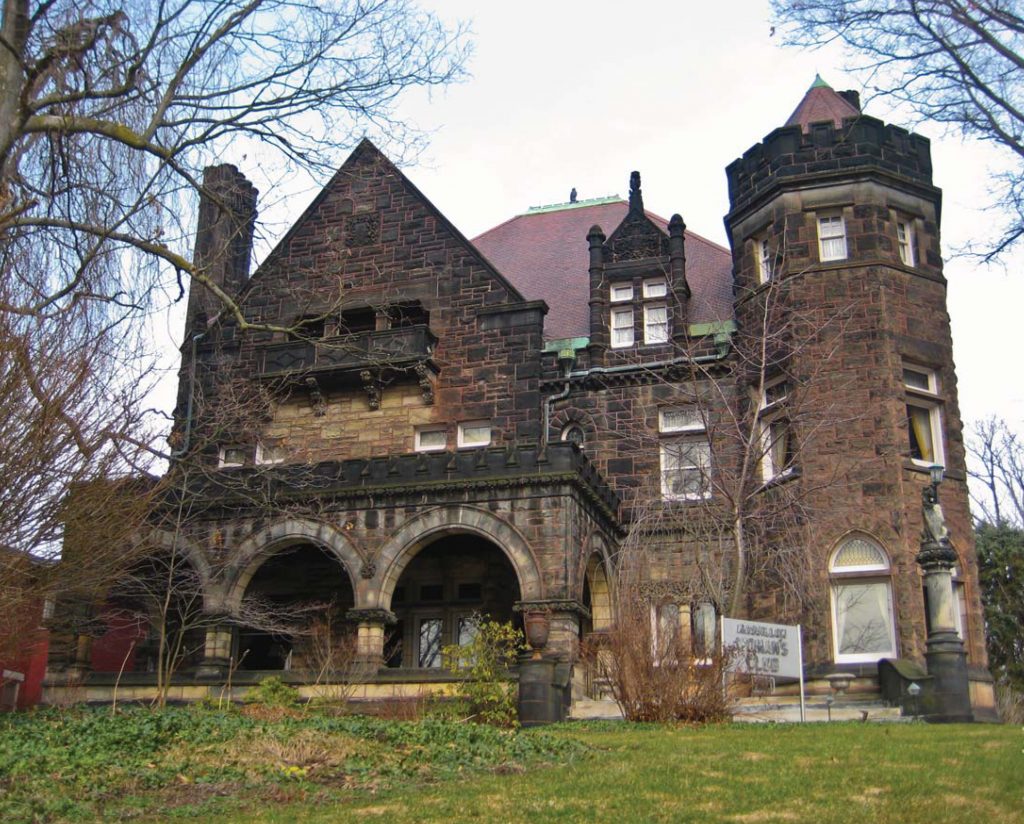HDC President Charissa Durst receives Smart 50 Business Award
Since 2014, the Smart Business Columbus Smart 50 Awards have recognized the top executives of the 50 smartest companies in central Ohio for their ability to effectively build and lead successful organizations. All 50 winners were honored at a special celebration, and three organizations received specialty awards for their achievements in three category areas — innovation, impact and sustainability. Additionally, all guests were treated to a keynote address on what it takes to lead a successful “smart” company. Click here to read about what set the 50 honorees apart.

Five Oaks Historic Home project in the news

HDC teams with The Tradesmen Group to work on the Governor’s Residence
HDC is working once again with The Tradesmen Group, this time on a project at the Governor’s Residence in Bexley, Ohio. HDC had previously worked with The Tradesmen Group as the General Services Administration’s (GSA’s) representative during the construction phase of the exterior restoration of the federal courthouse in Toledo, Ohio. The two firms teamed to compete for the project to renovate/replace the existing pergola and portico roof on the rear elevation of the Ohio governor’s mansion, which was designed by Robert Gilmore Hanford, a Columbus-based architect, for industrialist Malcolm D. Jeffrey. The mansion was built during 1923–1925 and the Jeffreys lived in the house until Malcom’s death in 1930, at which point it was sold to his sister Florence Jeffrey Carlile. In the 1940s, Mrs. Carlile expanded the house with an addition of a screened garden room on the first floor that led to a covered portico and extended into a wooden pergola. On top of the portico was a small rooftop terrace that served an expanded master bedroom suite. Upon Mrs. Carlile’s death in 1954, the house passed into the hands of the Very Reverend Charles U. Harris, who sold the house to the State of Ohio in 1957, and since then it has been used as the official governor’s residence — or a meeting site if the governor chose to live elsewhere.
The current project is to replace the wooden portico, which itself is a replacement of an earlier version, with a structure that will have a life cycle of at least 40 years. The roof over the portico will be replaced with one that will allow the roof terrace to be more actively used, and any necessary structural repairs will be completed.

HDC Finds Success Working as a Consultant to Engineering Firms
In the past five years, HDC has been teaming with other architectural and/or engineering firms on a variety of higher education projects. At The Ohio State University, HDC has teamed with Monks Engineers on a variety of infrastructure improvement projects that required some architectural support. For example, at the OSU Newark campus, HDC designed a screening wall for a new generator outside of Reese Hall and also designed a set of concrete steps for access up the hillside. On the main campus, HDC provided details and specifications for historic material demolition and repair to support the replacement of electrical panels in Orton Hall. OSU also asked HDC to design a corten steel screening fence for the equipment yard with a custom pattern, but later determined that an electrical project could not fund a custom fence.


Ziti Graduates (barely) from Foundation Obedience Class!
Since the middle of August, Ziti has been in a weekly foundation obedience class held at the veterinarian’s office next door to HDC’s location in Clintonville. At the end of September, Ziti had her final evaluation. She lost points for sniffing while heeling (the beagle in her is absolutely fascinated with the smells on the floor), and she broke formation during her 1-minute sit-stay and her 2-minute down-stay (she only holds a stay when the reward is great — like dinner). She also didn’t manage to stand still the first time but did pretty well on the second try. However, she was perfect coming when called, which the instructor said is the most important command to know. So, overall, she scored about a 75. Charissa’s husband, Don, noted that Donut did much better at her graduation evaluation; he had to be reminded that Donut was almost a year old at that point and had already been through two Puppy Kindergarten and one Basic Obedience class with another instructor.


However, Ziti didn’t just spend all seven weeks in class and doing homework. One of the class assignments was to visit a new place every week. So, Ziti got to visit Highbanks Metro Park one weekend and had fun splashing and posing.


























